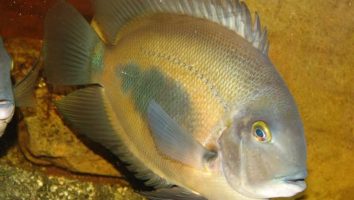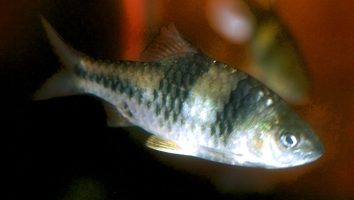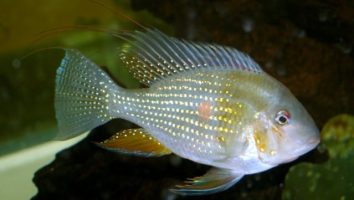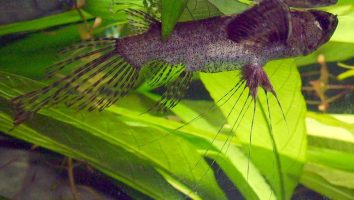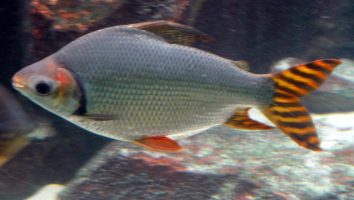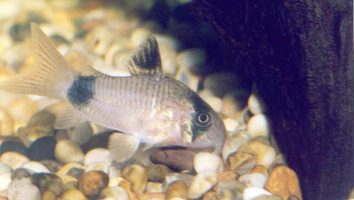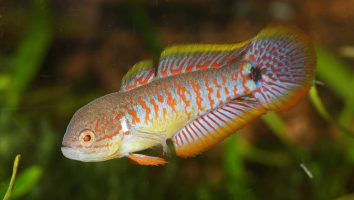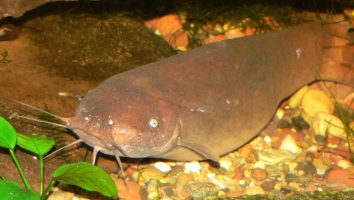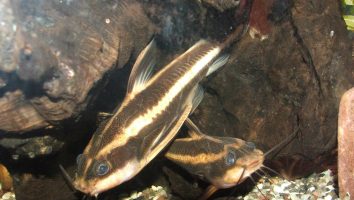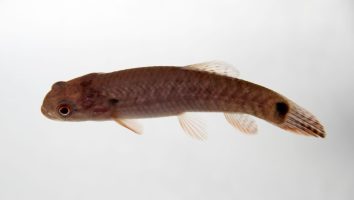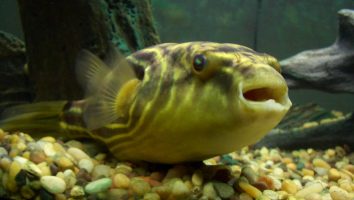The pink-tail chalceus is a freshwater fish that is native to South America. It is a popular fish in the aquarium trade due to its bright coloration and peaceful nature. This fish is a member of the Characidae family and is closely related to the Cardinal Tetra.
The pink-tail chalceus is a hardy fish that is easy to care for. It is an omnivorous species that will eat a variety of foods, including pellets, flakes, live, and frozen foods. This fish does best in an aquarium with plenty of hiding places and plants.
The pink-tail chalceus is a peaceful fish that can be kept with a variety of other peaceful fish. It is not known to harass other fish or eat their food.
The pink-tail chalceus is a popular fish in the aquarium trade due to its bright coloration and peaceful nature. It is a hardy fish that is easy to care for and does well in a community aquarium.
Table of contents
Species overview
The pink-tail chalceus (Chalceus erythrurus) is a freshwater fish that is found in the Amazon Basin of South America.
This fish prefers slow-moving waters with a lot of vegetation. They are often found in flooded areas during the rainy season.
The pink-tail chalceus is a schooling fish, which means they live in groups. In the wild, these fish can grow to be quite large, up to 18 inches (45 cm) long.
In the aquarium, they are a peaceful fish that can get along with most other tank mates. They are a hardy fish that can adjust to a wide range of water conditions.
The main draw of the pink-tail chalceus is their bright pink tail. This makes them a popular choice for freshwater aquariums.
Appearance
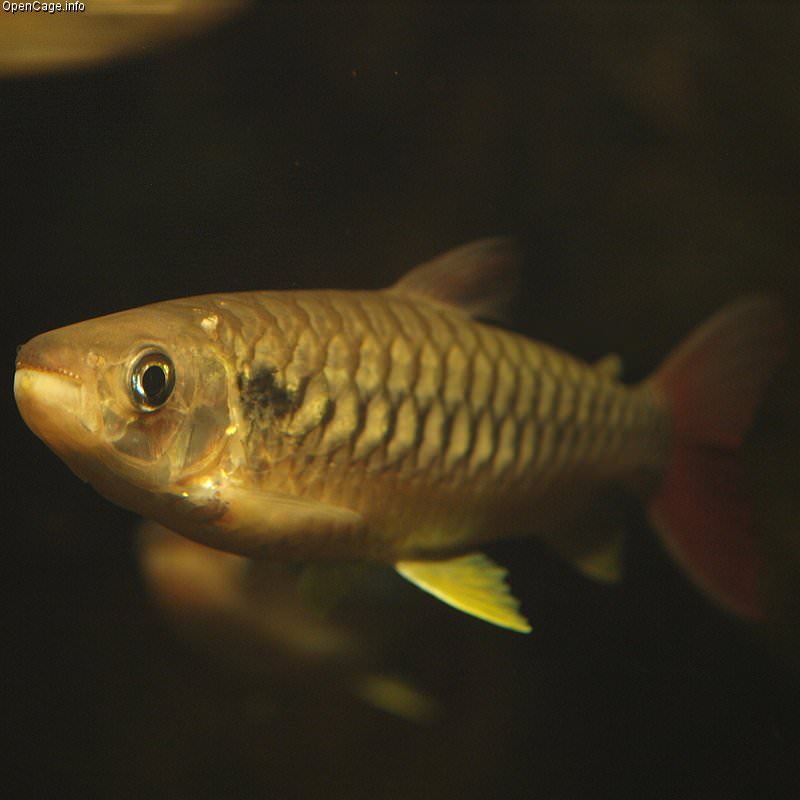
The first thing you’ll notice about this freshwater fish is their long, thin body shape. They have a torpedo-like appearance that helps them zip through the water with ease.
This body shape is made even more streamline by their long, flowing fins. The dorsal fin starts about halfway back on their body and extends all the way to the end of their caudal peduncle.
The anal fin is a bit shorter, but still quite lengthy. It starts a little closer to the head of the fish and doesn’t quite make it to the end of the body. Both of these fins have a very pronounced “notch” in the middle.
The caudal fin itself is forked and symmetrical. The ventral fins on this fish are very small and thin. They’re located a little bit closer to the head than the anal fin.
The coloration on this fish is very striking. The body is a deep blue color that fades to a white on the underside. There are also thin horizontal stripes that run along the length of the body.
The fins are mostly transparent with a slight blue tint. The edges of the fins have a pinkish hue that really makes them stand out.
Lifespan
The lifespan of a pink-tail chalceus is around 5 to 8 years. Just like any other fish, their lifespan can be impacted by a number of different factors.
The quality of their environment is probably the most important factor. If they’re in a well-maintained tank with good water quality, they’ll likely live on the higher end of this range.
The diet you feed them is also important. A good diet will help them stay healthy and fight off disease.
Finally, the amount of stress they’re under also plays a role. If they’re constantly being harassed by tank mates or if the tank is too small, their lifespan will be shorter.
Size
Pink-tail chalceus can grow to be around 12 inches long, though they are typically closer to 8 or 9 inches. These fish are also some of the heaviest in their family, weighing in at around 2.5 pounds.
Tank
Tank Size
The recommended tank size for a single Chalceus macrolepidotus (pink-tail chalceus) is 132 gallons. This fish can grow to be quite large, so it’s important to provide them with the necessary space from the start.
If you’re looking to keep more than one fish, you should add an additional 66 gallons for each additional fish. This fish is also a bit of a messy eater, so you may want to consider overfiltering your tank.
Water Parameters
The pink-tail chalceus is a schooling fish that is found in the Amazon River basin. In the wild, they inhabit slow-moving waters with sandy bottoms and plenty of vegetation.
As with any fish, it’s best to try and replicate their natural habitat as closely as possible. That includes the water parameters.
Fortunately, pink-tail chalceus are pretty easy to please in this regard. They’re found in warm, slightly acidic water with plenty of oxygenation.
Here are a few basic water parameters to help create a healthy environment for your pink-tail chalceus.
- Water temperature: 68 to 86 degrees Fahrenheit
- pH levels: 6.0 to 7.5
- Water hardness: 2 to 12 dGH
- Alkalinity Levels: 4-8 dKH
What To Put In Their Tank
When it comes to setting up an aquarium for a Pink-tail Chalceus, there are a few things to keep in mind.
The first is that these fish are active swimmers. They’re not going to spend a lot of time at the bottom of the tank, so the substrate isn’t a big deal. You can use gravel, sand, or even go bare-bottomed if you want.
The second thing to consider is that these fish like to have some cover. This can be in the form of plants, rocks, or driftwood. It’s important to provide enough so that they feel comfortable, but not so much that the tank feels cramped.
A third thing to keep in mind is that these fish are social creatures. They do best in groups of 6 or more. This means that you’ll need a tank that’s at least 50 gallons.
And finally, we recommend using a filter that has a moderate flow rate. These fish are used to living in rivers and streams, so they’re not going to be comfortable in a tank with little to no water movement.
Common Diseases
Pink-tail chalceus are a hardy bunch and don’t often get sick. However, as with any fish, there’s always a chance that something could go wrong.
The most common disease that these fish experience is ich. This is a parasites that affects freshwater fish and can be quite serious if left untreated.
The most obvious sign of ich is the presence of white spots on the body of your fish. If you notice this, you’ll need to take quick action to treat the illness.
Other potential diseases include bacterial infections, fungal infections, and parasites. As with ich, these can all be quite serious if left untreated.
The best way to prevent your fish from getting sick is to maintain a clean and stable tank. This will create an environment that is less hospitable to disease and will help your fish stay healthy.
Behavior & Temperament
The Pink-tail chalceus is a schooling fish, which means it does best when it’s in the company of other fish. In the wild, these fish travel in large groups. So, when they’re in captivity, they feel more comfortable and secure when they’re surrounded by their own kind.
These fish are very active, so they need a lot of space to swim. A 30-gallon tank is the minimum size you should consider for a school of these fish.
The Pink-tail chalceus is a peaceful fish, but it can be a bit nippy. It’s not aggressive, but it may nip at the fins of other fish. This is especially true if the other fish are smaller than the Pink-tail chalceus.
Tank Mates
Chalceus macrolepidotus, or the pink-tail chalceus, is a schooling fish. That means they do best when kept in groups of at least six fish.
This social behavior leads to a few key tank mate considerations. First, the fish needs a freshwater tank that’s at least 55 gallons.
While they can do well in smaller tanks temporarily, they’ll be much happier (and healthier) in a larger space.
Another tank mate consideration for chalceus macrolepidotus is to find fish that occupy different parts of the water column.
These fish like to stay close to the bottom, so fish that school in the middle or top of the tank are ideal. Here are a few species that make good tank mates:
- Neon Tetras
- Cardinal Tetras
- Rummy Nose Tetras
- Silver Dollar Fish
- Serpae Tetras
- Black Skirt Tetra
- Buenos Aires Tetras
Breeding
The pink-tail chalceus is a beautiful and relatively easy to breed freshwater fish. This species is native to the Amazon basin and can be found in Peru, Brazil, and Colombia.
The pink-tail chalceus is a peaceful fish that gets along well with other species. They are not aggressive and make good community fish.
This species can be a bit difficult to find in the aquarium trade. However, they are becoming more popular and are easier to find than they used to be.
The pink-tail chalceus is an egg-laying species. They are not livebearers.
To breed the pink-tail chalceus, you will need to set up a breeding tank. The tank should be at least 20 gallons and should have a sandy bottom.
Add some plants and driftwood for decoration. The plants will provide hiding places for the fry. The driftwood will help to maintain the water quality.
The water temperature should be between 75 and 82 degrees Fahrenheit. The pH should be between 6.5 and 7.5.
When ready, add two females for every male. The males are smaller and have longer fins.
The pink-tail chalceus is a mouthbrooder. The female will pick up the eggs in her mouth and incubate them until they hatch.
The fry will be large enough to eat baby brine shrimp and other small foods.
Conclusion
Overall, we think the Pink-tail Chalceus is a great fish for beginner and experienced aquarists alike. They’re easy to care for and are very peaceful, making them a great addition to any community tank.

